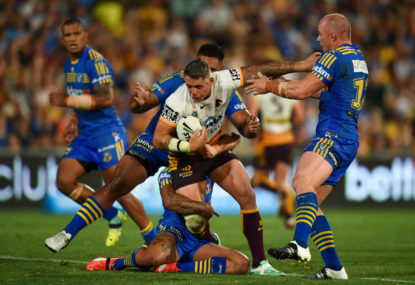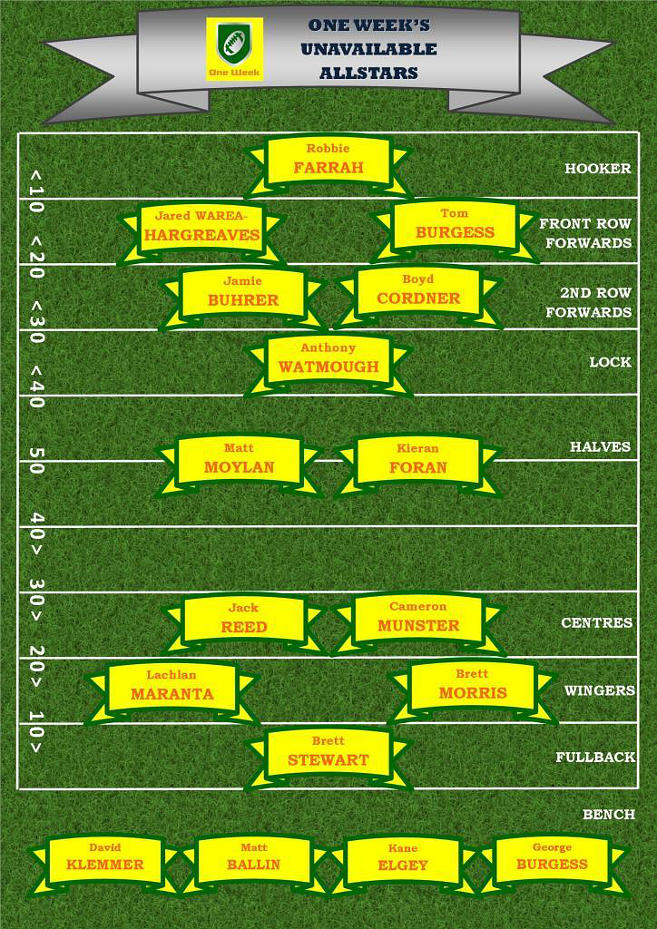NRL is flying high in 2024 but if this isn’t the best season ever, then which one is?
Many rugby league aficionados like Matthew Johns are saying this NRL season is the best year there’s been. Comparing seasons throughout the years is…

The off-season used to be a time of healing. Players would rest their battered and bruised bodies after a long season of inflicting punishment on themselves and their opponents.
Surgeons rubbed their hands together with glee as footballers lined their hallways, with an endless supply of knees to be cleaned out, shoulders to be tightened up and muscles to be reattached.
After six months without the weekly brutality of rugby league, players were fresh and ready to tackle a new season. However in 2016 it seems the injury bug has bitten early, as several teams gingerly limped out of Round 1.
The high-profile nature of the injured absentees gave the opening round of the NRL season an almost anticlimactic feeling. Parramatta fans will feel especially deflated after waiting almost 25 years for their Kiwi messiah, only to see him succumb to a dodgy hamstring before even lacing up a boot.
The list of unavailable talent spans all clubs and positions. In fact, you could probably field a highly competitive squad made up of those riding the pine for Round 1.

So what’s different this year? Why are our best and brightest spending more time with the team physio than with their wife and kids? The intensity of the pre-season program is a likely culprit. The summer schedule is bulging with the Auckland Nines and World Club Challenge sitting alongside the Indigenous All Stars clash and traditional trial fixtures. Even rugby league tragics would struggle to digest this much football before the cricketers have even folded away their coloured pyjamas.
Most agree that having all these fixtures during the preseason is too much, but the question of what stays and what goes is a sensitive one. The Indigenous All-Stars match has a degree of cultural importance which would make scrapping it challenging. The Auckland Nines is dripping with cash and TV ratings, which the NRL devours like hungry children home from fat camp. The World Club Challenge promotes international rugby league, something most involved with the game reluctantly deem as important for the future of the code.
Those at NRL HQ seem decision impaired at the best of times, with rumours from Moore Park that John Grant establishes sub-committees to finalise sandwich fillings. The likely outcome is for all fixtures to remain, players to suck it up, and fans to keep their fingers crossed.
Manly’s season gone to the Dogs?
Given the negative impact the Mitchell Pearce controversy had on women’s perceptions of rugby league, it was encouraging to see the Manly players take a proactive approach by having their wives and girlfriends play in their stead against the Bulldogs on Friday evening. At least it seemed that way.
After the Sea Eagles spent the off-season playing Super Coach with their NRL roster, Friday night at Brookvale Oval was billed as a new dawn of Manly football. Personally, I have predicted big things for the Sea Eagles in 2016, and was full of anticipation to catch a glimpse of the rugby league Frankenstein Trent Barret and Bozo had created over the summer.
Instead, viewers endured a torturous 80 minutes from a Manly squad who played like they were introduced to each other in the sheds before the game. From the outset, they lacked discipline and concentration, with cheap penalties and elementary handling errors gifting the Bulldogs possession with obscene regularity. The Sea Eagles committed nine penalties and accounted for 13 errors, meaning they handed possession or a new set of tackles to the Dogs every 3.6 minutes.
Many a Manly detractor has preached that you cannot simply stack a team with new talent and expect them to hit the ground running. And while there is no substitute for game time, Barrett had five months to get these blokes functioning as a cohesive unit. Yet the ill-discipline, constant dropped ball and repeated break-downs in defence are hallmarks of a team unprepared for Round 1.
In stark contrast, Canterbury were ready. Many worried how an enormous Bulldogs forward pack would handle the fatigue associated with a reduction in the interchange from 10 to 8. No problem. Des Hasler has got his forwards to trade quarter pounders for kale smoothies, and the boys shed kilos faster than a maternity ward. The svelte figure cut by Sam Kasiano was particularly noticeable. And while the Bulldogs were not sensational, they didn’t need to be. Manly served up the game on a silver spoon, and the Dogs hungrily devoured it.
New study reveals that adding attacking firepower fails to remedy holes in defence
The New Zealand Warriors have long been known as a potent attacking side held back by suspect defence and maddening ill-discipline. A belligerent Andrew McFadden chose to gloss over these defensive short-falls, instead signing home grown magician Roger Tuivasa-Sheck and creative dummy half Issac Luke to add to the attacking brilliance of Shaun Johnson.
It was Groundhog Day on a warm Saturday afternoon in Campbelltown, when the Warriors opened their season with a potent attacking display held back by predictably suspect defence and maddening ill-discipline. I thought I had accidentally tuned into a 2015 replay until Roger Tuivasa-Sheck streaked down the right side of the field to ensure his weekly inclusion on the highlight reel.
Round 1 against the Tigers was supposed to be a gimme for the Warriors. Minus their regular halfback and hooker, the Tiger cubs simply did not have the cattle to compete with their star-studded Kiwi cousins.
Instead fans were treated to a vintage New Zealand Warriors display. Cheap penalties and rookie defensive errors invited their opponent into the contest. Just when the game felt out of reach, a penny dropped somewhere and a stunning comeback was underway. An ankle-breaking Shaun Johnson sidestep, a bullocking barge-over from a centre with the dimensions of a small block of units, but ultimately falling agonisingly short of success.
For their part, the Tigers played with refreshing enterprise in attack. The stellar performance of the much maligned Mitchell Moses parted a sea of critics in arguably his finest in first grade. James Tedesco was outstanding. If he can replicate these performances with any degree of regularity, not even Laurie Daley could leave him out of the NSW side. Fans of the besieged joint venture will ooze arrogance upon returning to work on Monday. Steer well clear of them.
A nerdy German bloke once said that the definition of insanity is doing the same thing over and over again and expecting different results. At some point, the Warriors must address their defensive deficiencies with more conviction than the token signature of Ryan Hoffman. If not, coach Andrew McFadden is destined for a stint in a padded cell.
Follow Taking it One Week at a Time throughout the 2016 NRL season on The Roar, by liking our Facebook page or registering your email address on our blog.